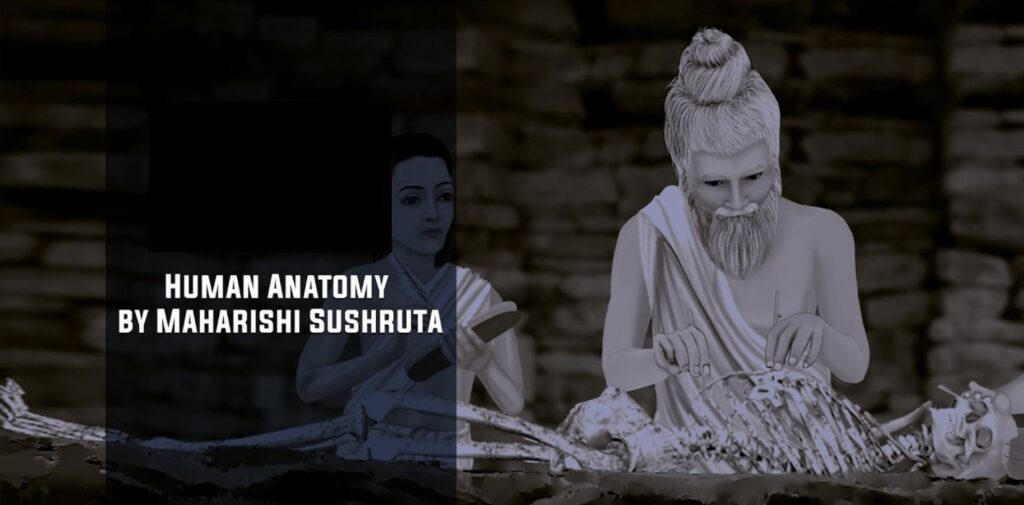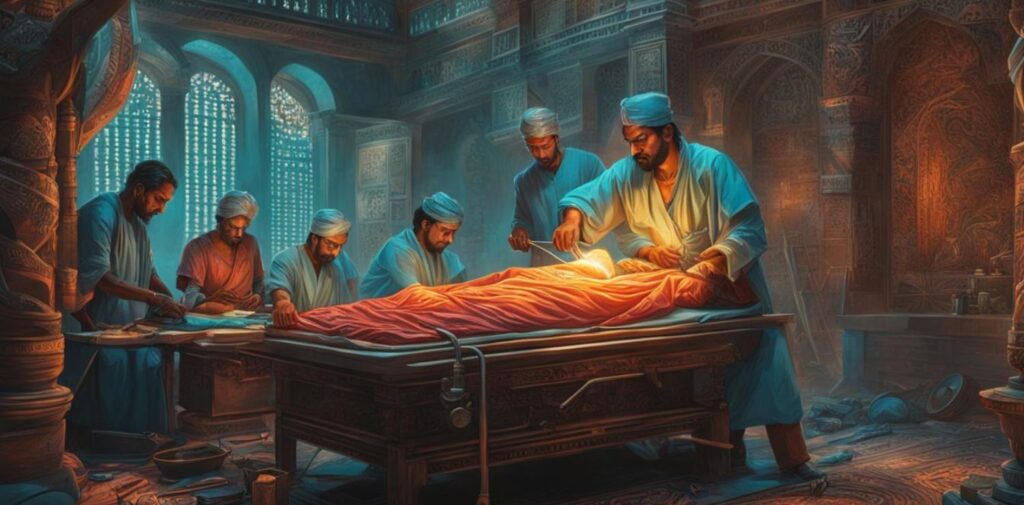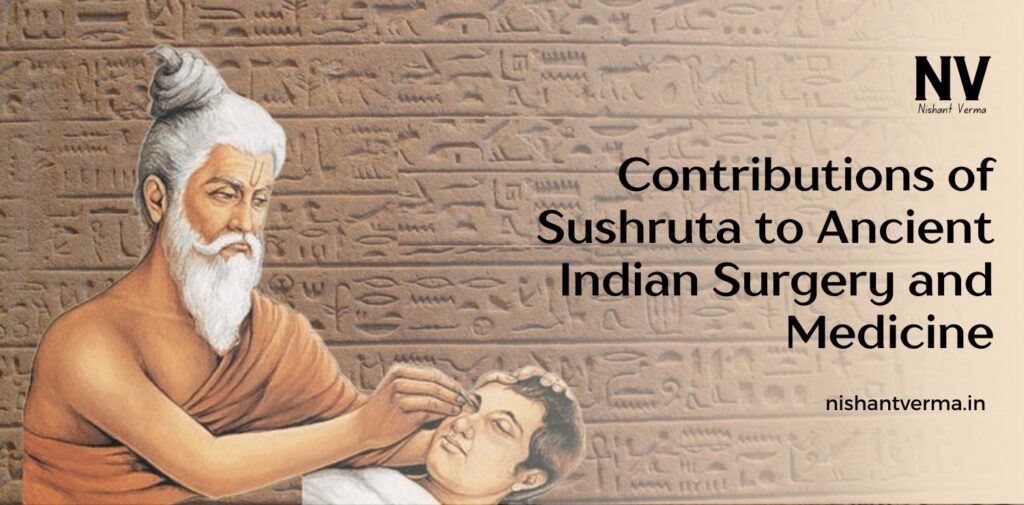The history of medicine in India dates back thousands of years, with one of the most notable figures in ancient Indian healthcare being Sushruta. Known as the “father of surgery” in ancient India, Sushruta made groundbreaking contributions to the field of medicine and surgery that laid the foundations for modern medical practices. His insights into human anatomy, surgical techniques, and medicinal practices were revolutionary and have influenced healthcare practices worldwide.
In this article, we will explore the significant contributions made by Sushruta to ancient Indian surgery and medicine, shedding light on how his work continues to impact medicine even today.
Who Was Sushruta?
Sushruta was an ancient Indian physician and surgeon who is believed to have lived around 600 BCE. He is most famously known for authoring the Sushruta Samhita, one of the earliest and most comprehensive texts on surgery and medicine in the world. His work on the treatment of various diseases, surgical procedures, and the use of medicinal plants was a cornerstone in the development of ancient medical practices in India.
The Sushruta Samhita not only provides detailed descriptions of surgical techniques but also discusses topics such as anatomy, diagnosis, treatment of injuries, and the role of diet and lifestyle in maintaining health. Sushruta’s teachings have had a lasting impact, not just in India but across the world, influencing both Eastern and Western medical traditions.

Sushruta’s Impact on Surgery
1. Development of Surgical Techniques
Sushruta is often referred to as the pioneer of surgery due to his detailed and innovative descriptions of surgical procedures. His work is particularly famous for its focus on surgical techniques and instruments. He described over 300 surgical procedures and over 120 surgical instruments used for different types of operations. His contributions helped set the stage for the development of more advanced surgeries in later centuries.
Some of the surgeries mentioned in the Sushruta Samhita include operations for the removal of stones from the bladder, cataract surgery, and the treatment of fractures. Sushruta’s techniques in plastic and reconstructive surgery were especially advanced for his time. He described the method of repairing a torn earlobe or a nose using skin grafts, which is still practiced in modern-day reconstructive surgeries.
2. Surgical Instruments
One of the most remarkable aspects of Sushruta’s contribution was his design and description of surgical instruments. He recognized the importance of using precise and specialized tools for different surgical procedures. His text includes detailed illustrations and descriptions of over 120 different surgical instruments, many of which resemble the tools used in modern surgery.
For example, he described sharp knives, scalpels, forceps, and hooks, which were designed for specific purposes such as cutting, suturing, and manipulating tissues. The precision of these tools helped reduce complications and improve the effectiveness of surgeries, setting a high standard for surgical practices in ancient times.
3. Use of Anesthesia and Pain Management
Sushruta also made significant contributions to the management of pain during surgery. Although the concept of anesthesia as we know it today did not exist, Sushruta was one of the first to mention the use of certain herbal concoctions to numb pain during surgical procedures.
He prescribed various medicinal plants such as soma, bhang, and sandalwood, which were used for their sedative and analgesic properties. These natural substances helped reduce the pain experienced by patients undergoing surgery, marking an early form of anesthetic treatment in medicine.

Contributions to Human Anatomy and Physiology
1. Understanding of Human Anatomy
In the Sushruta Samhita, Sushruta demonstrated an extraordinary understanding of human anatomy. He was one of the first to discuss the structure and function of different body parts in great detail. He described the human body as a complex system of interconnected organs, tissues, and fluids, with each part playing a vital role in maintaining health.
Sushruta’s knowledge of human anatomy came from a combination of dissections, observations, and practical experience in treating injuries and diseases. He made detailed notes about the different systems in the body, such as the circulatory, digestive, and nervous systems. His understanding of the anatomy of muscles, bones, and blood vessels allowed him to perform surgeries with greater precision and accuracy.
2. The Importance of Diagnosis and Prognosis
Sushruta placed great emphasis on the importance of accurate diagnosis and prognosis in medical practice. He believed that understanding the underlying cause of a disease was crucial for providing effective treatment. The Sushruta Samhita outlines various methods for diagnosing conditions, including observation of symptoms, examination of the pulse, and careful questioning of the patient.
By stressing the importance of diagnosis, Sushruta set the foundation for evidence-based medicine, where treatment decisions are based on the careful assessment of symptoms and the patient’s overall health. This approach to medicine was ahead of its time and contributed to more effective healthcare in ancient India.
Contributions to Medicine
1. Herbal Medicine and Natural Remedies
In addition to his surgical expertise, Sushruta made significant contributions to the field of herbal medicine. The Sushruta Samhita contains a wealth of information on medicinal plants and their therapeutic properties. Sushruta described the use of various herbs for treating ailments, ranging from minor cuts and wounds to more serious conditions like fevers and digestive disorders.
He was keenly aware of the importance of nature in healing, and his work emphasizes the role of diet, exercise, and lifestyle in maintaining health. Many of the herbs and remedies that Sushruta described are still used in Ayurvedic medicine today, highlighting the timeless nature of his medical knowledge.
2. Preventive Medicine
Sushruta’s contributions to medicine also extended to preventive healthcare. He believed that health was not just about treating diseases but also about maintaining a balanced lifestyle. He recommended specific diets, exercise routines, and lifestyle changes to prevent illness and promote long-term well-being.
Sushruta’s ideas on prevention laid the groundwork for modern concepts of public health and wellness, where the focus is on lifestyle modifications and early intervention to prevent diseases before they occur.

Influence on Later Medical Practices
1. Legacy in Ayurveda
Sushruta’s teachings became the foundation for the system of Ayurveda, a traditional Indian medical system that is still practiced today. Ayurveda, which emphasizes balance between the body, mind, and spirit, incorporates many of the principles outlined by Sushruta in his writings. His contributions to surgery, diagnosis, and treatment of diseases formed a core part of Ayurvedic practice, and his influence continues to be felt in the field.
The Ayurvedic approach to health, which is based on understanding the individual’s constitution, diet, lifestyle, and environment, reflects Sushruta’s holistic view of medicine. His emphasis on the interconnectedness of the body and mind also aligns with Ayurvedic principles of balance and harmony.
2. Global Influence
Sushruta’s contributions to surgery and medicine did not remain confined to India. His work was translated and studied by scholars across the world, especially in the Middle East. Ancient Greek and Roman doctors, such as Hippocrates and Galen, were aware of Indian medical texts, and many of their works show evidence of Indian influence. The surgical techniques and instruments described by Sushruta were incorporated into medical practices in other cultures, helping to shape the development of surgery in the ancient world.
Conclusion: Sushruta to Ancient Indian Surgery and Medicine
Sushruta’s contributions to ancient Indian surgery and medicine have left an indelible mark on the field of healthcare. His groundbreaking work in surgery, anatomy, herbal medicine, and diagnosis laid the foundation for modern medical practices and has influenced generations of healthcare professionals. Sushruta’s holistic approach to health, emphasizing prevention, treatment, and the interconnectedness of the body and mind, remains relevant even today.
By pioneering innovative surgical techniques, creating specialized instruments, and focusing on the healing power of nature, Sushruta’s legacy continues to inspire and guide the field of medicine, not just in India but across the world. His work stands as a testament to the brilliance of ancient Indian medical knowledge and its lasting impact on global healthcare practices.




